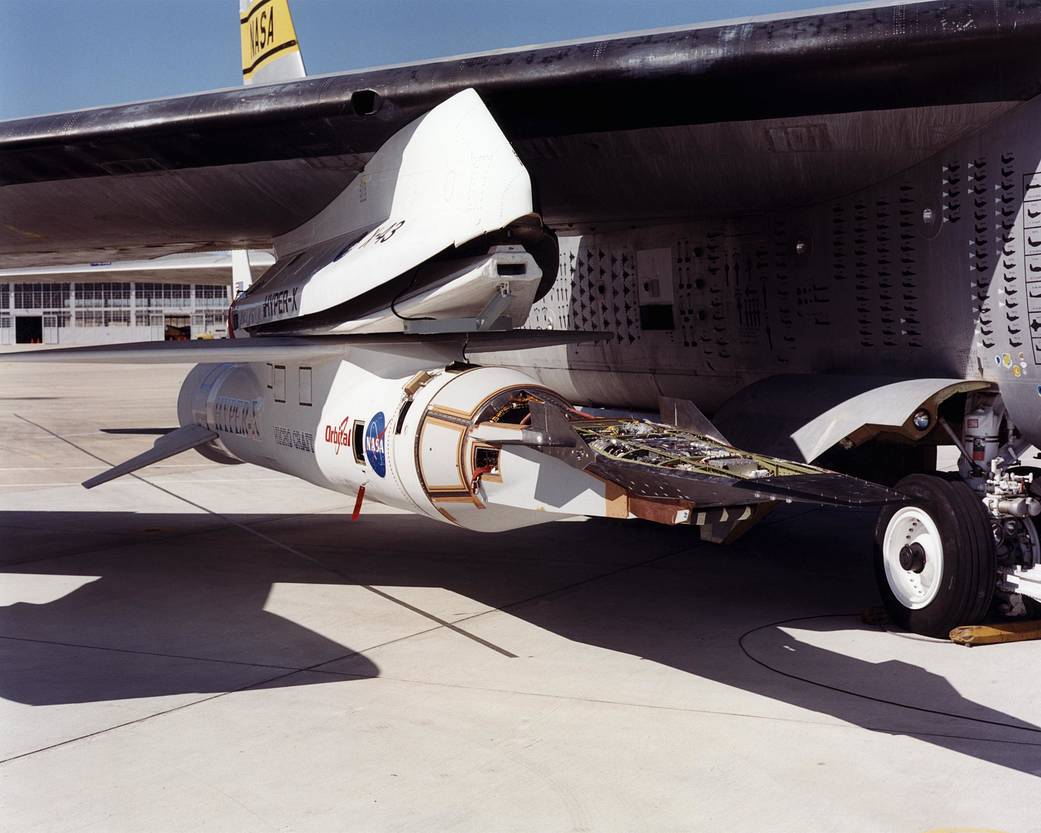EC01-0079-5
The first of three X-43A hypersonic research aircraft and its modified Pegasus® booster rocket underwent combined systems testing while mounted to NASA’s NB-52B carrier aircraft at the Dryden Flight Research Center, Edwards, CA. The combined systems test was one of the last major milestones in the Hyper-X research program before the first X-43A flight. One of the major goals of the Hyper-X program was flight validation of airframe-integrated, air-breathing propulsion system, which had previously only been tested in ground facilities, such as wind tunnels. The X-43A flights were the first actual flight tests of an aircraft powered by a revolutionary supersonic-combustion ramjet (“scramjet”) engine capable of operating at hypersonic speeds above Mach 5 (five times the speed of sound). The X-43A design used the underbody of the aircraft to form critical elements of the engine. The forebody shape helped compress the intake airflow, while the aft section acted as a nozzle to direct thrust. The 12-foot, unpiloted research vehicle was developed and built by MicroCraft Inc., Tullahoma, TN, under NASA contract. The booster, built by Orbital Sciences Corp., Dulles, VA, accelerated the X-43A after the X-43A/booster “stack” was air-launched from NASA’s NB-52 mothership. The X-43A separated from the rocket at a predetermined altitude and speed and flew a pre-programmed trajectory, conducting aerodynamic and propulsion experiments until it descended into the Pacific Ocean. Three research flights were planned, two at Mach 7 and one at Mach 10.March 13, 2001NASA Photo / Tony Landis› X-43A Project Description
2 min read

























